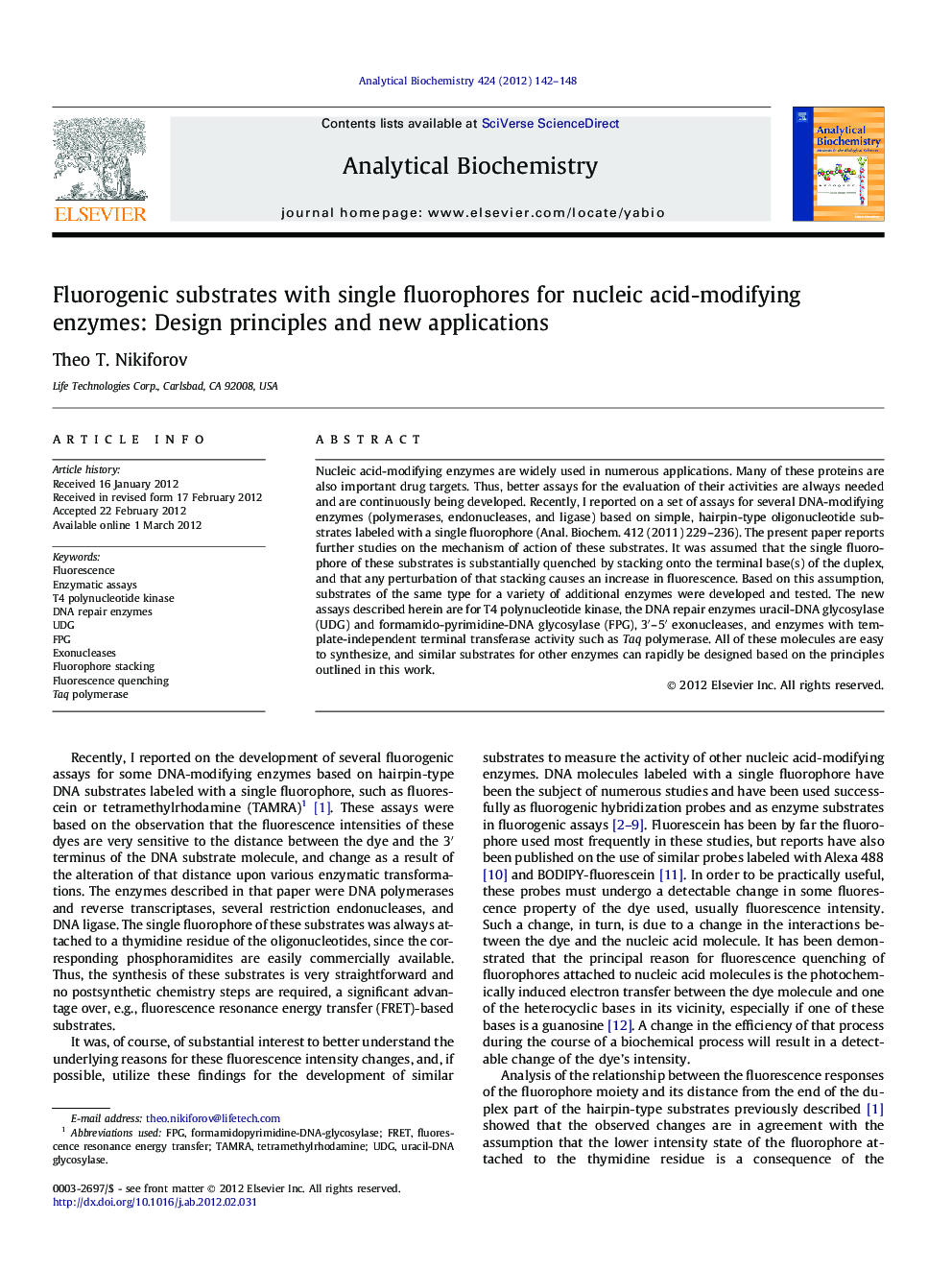| Article ID | Journal | Published Year | Pages | File Type |
|---|---|---|---|---|
| 10532742 | Analytical Biochemistry | 2012 | 7 Pages |
Abstract
Nucleic acid-modifying enzymes are widely used in numerous applications. Many of these proteins are also important drug targets. Thus, better assays for the evaluation of their activities are always needed and are continuously being developed. Recently, I reported on a set of assays for several DNA-modifying enzymes (polymerases, endonucleases, and ligase) based on simple, hairpin-type oligonucleotide substrates labeled with a single fluorophore (Anal. Biochem. 412 (2011) 229-236). The present paper reports further studies on the mechanism of action of these substrates. It was assumed that the single fluorophore of these substrates is substantially quenched by stacking onto the terminal base(s) of the duplex, and that any perturbation of that stacking causes an increase in fluorescence. Based on this assumption, substrates of the same type for a variety of additional enzymes were developed and tested. The new assays described herein are for T4 polynucleotide kinase, the DNA repair enzymes uracil-DNA glycosylase (UDG) and formamido-pyrimidine-DNA glycosylase (FPG), 3â²-5â² exonucleases, and enzymes with template-independent terminal transferase activity such as Taq polymerase. All of these molecules are easy to synthesize, and similar substrates for other enzymes can rapidly be designed based on the principles outlined in this work.
Keywords
Related Topics
Physical Sciences and Engineering
Chemistry
Analytical Chemistry
Authors
Theo T. Nikiforov,
